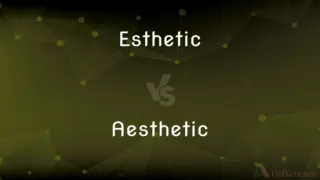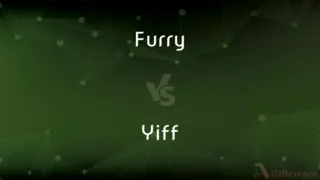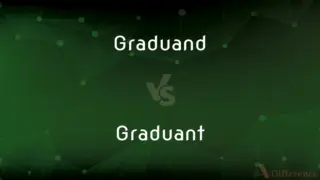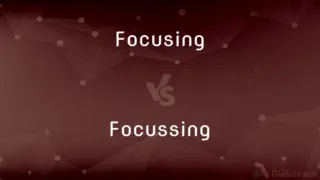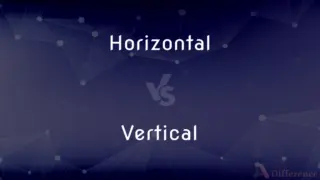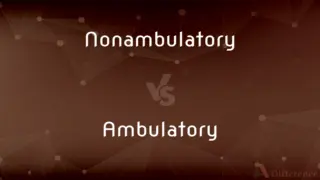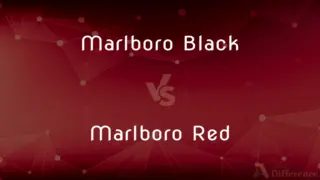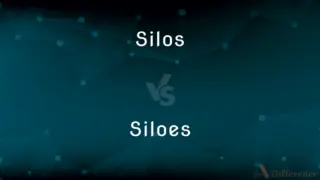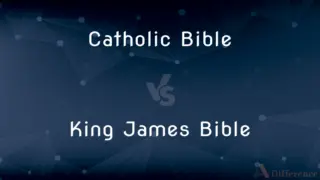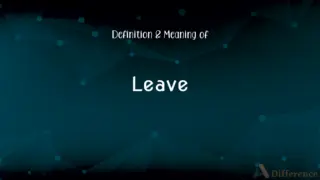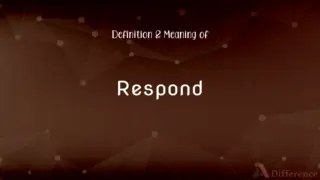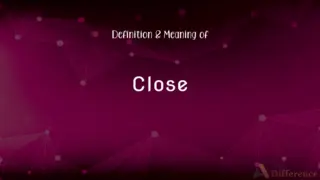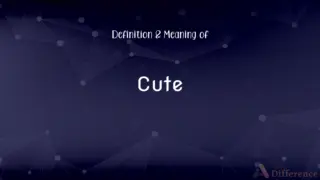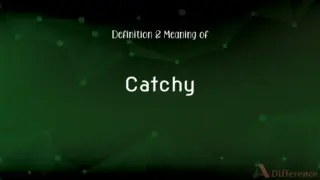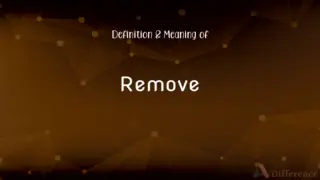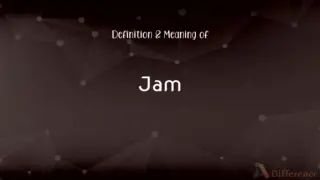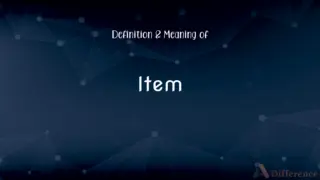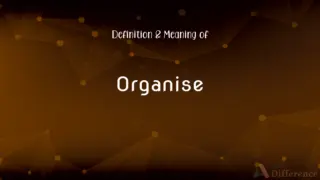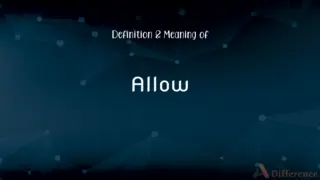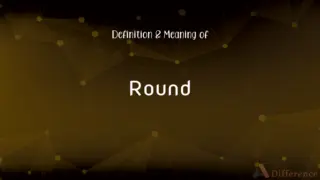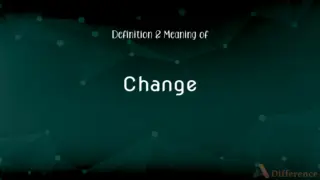Brushwood vs. Thicket — What's the Difference?
By Tayyaba Rehman — Published on September 30, 2023
Brushwood refers to twigs, branches, and small trees cut for fuel or fencing, while a thicket is a dense group of trees, bushes, or other vegetation.
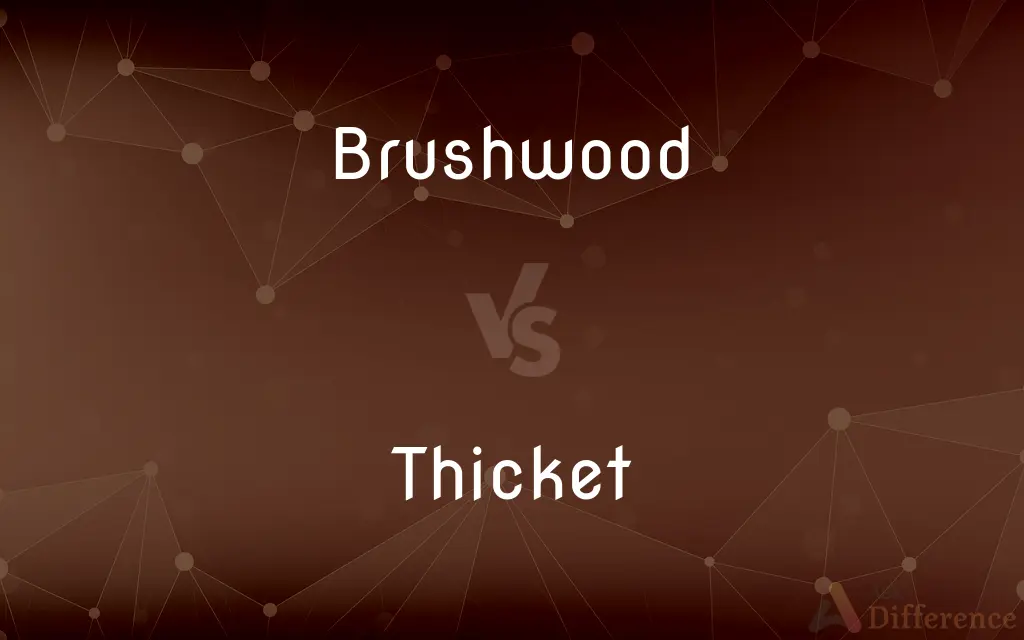
Difference Between Brushwood and Thicket
Table of Contents
ADVERTISEMENT
Key Differences
"Brushwood" and "thicket" are two terms that refer to collections of vegetation but are used in differing contexts and convey distinct imagery. "Brushwood" generally denotes smaller pieces of branches, twigs, and shrubs, usually gathered for practical uses such as fuel or fencing. It implies material that is cut, broken, or collected, usually smaller in size and often used as a resource. "Thicket," on the other hand, describes a dense, usually impenetrable, growth of shrubs, bushes, or small trees, and it is often used to convey the idea of an area of land covered by this kind of vegetation.
When considering "brushwood," think of smaller vegetative components such as branches and twigs, often used as a resource or material for various purposes, from kindling to crafting. It conveys a sense of utility, a collection of vegetative material meant for use. Conversely, "thicket" paints a picture of a densely grown area of vegetation, where the growth is so close together it’s often hard to move through. It implies a naturally occurring, often untouched or untamed, cluster of vegetation, which may serve as a habitat for wildlife.
While "brushwood" usually has a utilitarian aspect to it, being collected or used by people for specific purposes, "thicket" is more about the natural occurrence and formation of dense vegetation. "Brushwood" conveys an element of human interaction, a collection or accumulation of plant material for use, while "thicket" generally implies a more natural state, a proliferation of vegetation occurring without human intervention.
In representing collections of vegetation, "brushwood" typically refers to smaller, cut pieces of vegetation, assembled or accumulated, often portraying a resource or material with practical applications. "Thicket" instead depicts a thick, often impassable, growth of vegetation, illustrating a natural, wild state, and it is often associated with a sense of density, wildness, and impenetrability, offering shelter and habitat to various wildlife.
Comparison Chart
Definition
Twigs, branches, and small trees cut for use
Dense growth of shrubs, bushes, or small trees
ADVERTISEMENT
Focus
Utility and resource
Natural density and impenetrability
Application
Collected or used by humans for specific purposes
Refers to naturally occurring, dense vegetation
Implied Interaction
Suggests human interaction, collection, or use
Suggests a natural, untouched state
Representation
Smaller, cut pieces of vegetation
Impassable, wild, dense growth of vegetation
Compare with Definitions
Brushwood
Brushwood denotes branches and twigs collected for fuel.
He brought some brushwood to keep the fire going through the night.
Thicket
A thicket is a dense group of trees, bushes, or other vegetation.
The deer disappeared into the thicket.
Brushwood
Brushwood is cut or broken pieces of woody vegetation.
We built a makeshift shelter using brushwood.
Thicket
Thicket represents a thick, intertwined mass of vegetation.
Birds often find shelter in the thicket.
Brushwood
Brushwood represents small cut branches used for fencing.
They erected a temporary fence using brushwood.
Thicket
Thicket refers to an area characterized by a dense growth of vegetation.
The thicket provided a perfect hiding place for the small animals.
Brushwood
Brushwood signifies small woody vegetation collected for various uses.
The brushwood was stacked neatly near the campsite for later use.
Thicket
Thicket signifies a dense, often impenetrable, mass of shrubs or trees.
We decided to explore the mysterious thicket near the riverbank.
Brushwood
Brushwood refers to small branches and twigs.
They gathered brushwood to start a fire.
Thicket
A thicket is a very dense stand of trees or tall shrubs, often dominated by only one or a few species, to the exclusion of all others. They may be formed by species that shed large numbers of highly viable seeds that are able to germinate in the shelter of the maternal plants.
Brushwood
Branches that have been cut or broken off.
Thicket
A dense growth of shrubs or underbrush; a copse.
Brushwood
Dense undergrowth.
Thicket
Something suggestive of a dense growth of plants, as in impenetrability or thickness
"the thicket of unreality which stands between us and the facts of life" (Daniel J. Boorstin).
Brushwood
An area covered by such growth.
Thicket
A dense, but generally small, growth of shrubs, bushes or small trees; a copse.
Brushwood
Branches and twigs fallen from trees and shrubs.
Thicket
(figuratively) A dense aggregation of other things, concrete or abstract.
He had to complete a thicket of paperwork before he was allowed to join the company.
Brushwood
Small trees and shrubs.
Thicket
The collection of many small linked files created when a document is saved in HTML format by some word processors and web site creation software.
Brushwood
Brush; a thicket or coppice of small trees and shrubs.
Thicket
A wood or a collection of trees, shrubs, etc., closely set; as, a ram caught in a thicket.
Brushwood
Small branches of trees cut off.
Thicket
A dense growth of bushes
Brushwood
The wood from bushes or small branches;
They built a fire of brushwood
Thicket
Thicket denotes a dense, usually impenetrable, growth of shrubs and bushes.
It was challenging to navigate through the thicket without a machete.
Brushwood
A dense growth of bushes
Common Curiosities
What does "brushwood" primarily refer to?
"Brushwood" primarily refers to small branches, twigs, and similar pieces of wood cut or broken for use.
Is "brushwood" usually associated with human use?
Yes, "brushwood" is often associated with being collected or used by humans for specific purposes like fuel or fencing.
What does the term "thicket" depict?
"Thicket" depicts a dense and often impenetrable growth of shrubs, bushes, or small trees.
Can "brushwood" be used for crafting?
Absolutely, "brushwood" can be used for crafting various items due to its small, manageable size.
Is a "thicket" typically impenetrable?
Yes, a "thicket" is typically so densely grown that it can be challenging or impossible to move through.
Share Your Discovery

Previous Comparison
Jam vs. Preserves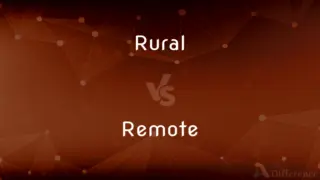
Next Comparison
Rural vs. RemoteAuthor Spotlight
Written by
Tayyaba RehmanTayyaba Rehman is a distinguished writer, currently serving as a primary contributor to askdifference.com. As a researcher in semantics and etymology, Tayyaba's passion for the complexity of languages and their distinctions has found a perfect home on the platform. Tayyaba delves into the intricacies of language, distinguishing between commonly confused words and phrases, thereby providing clarity for readers worldwide.

